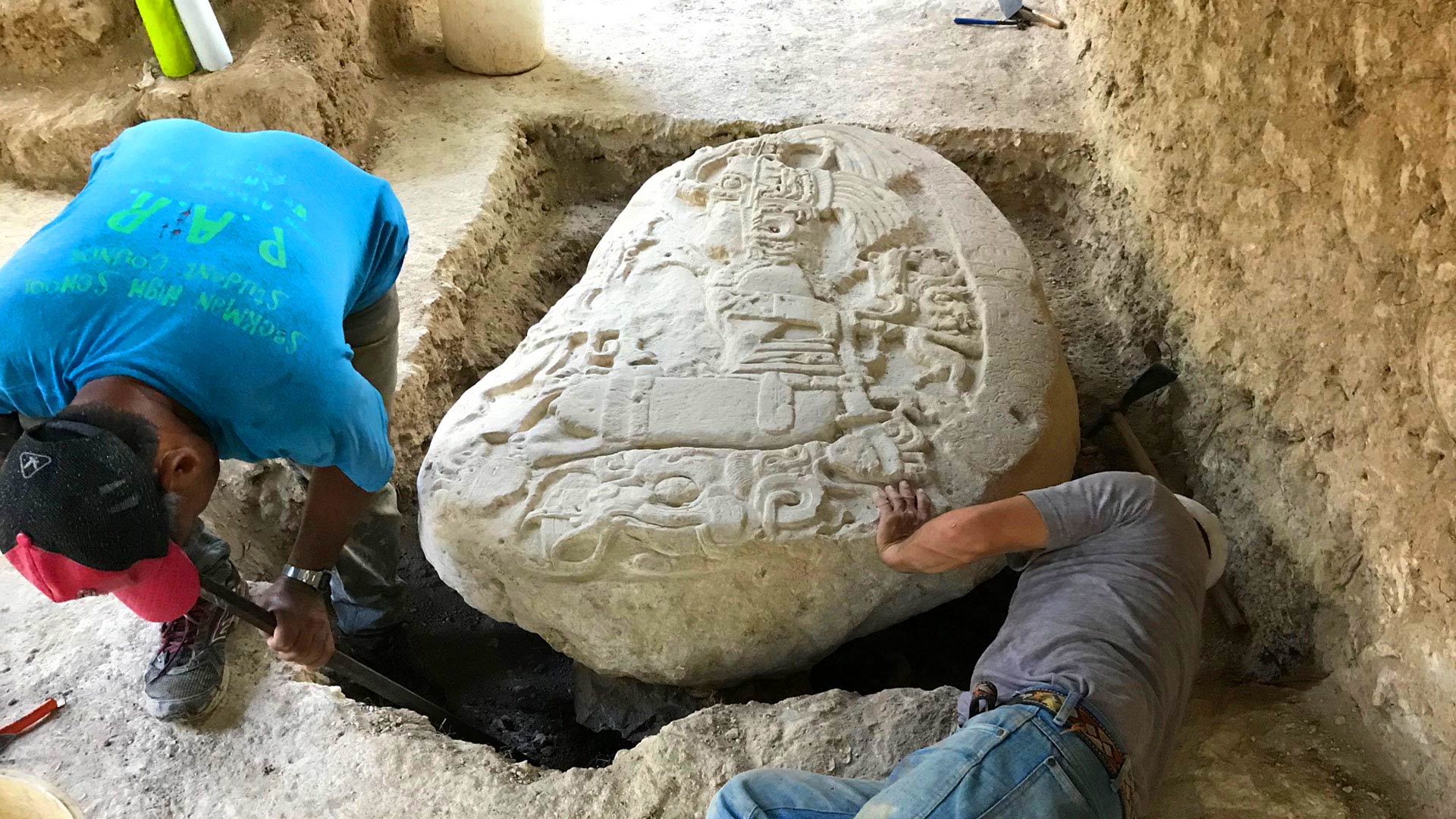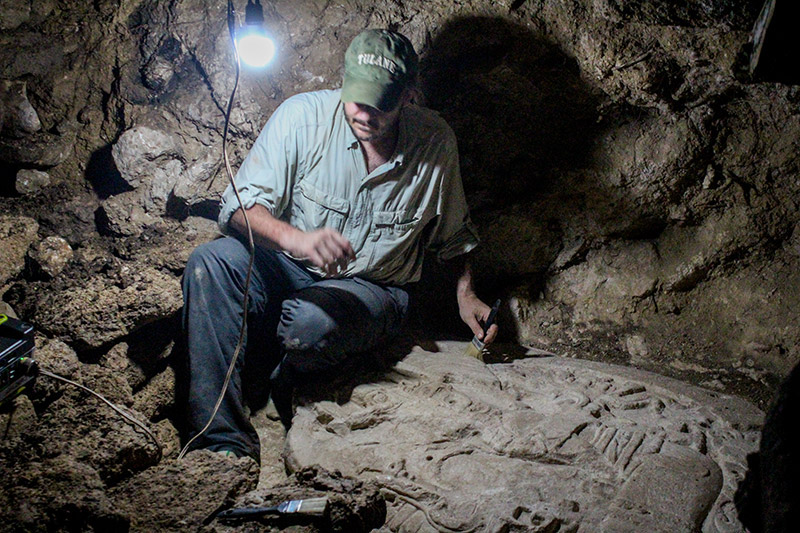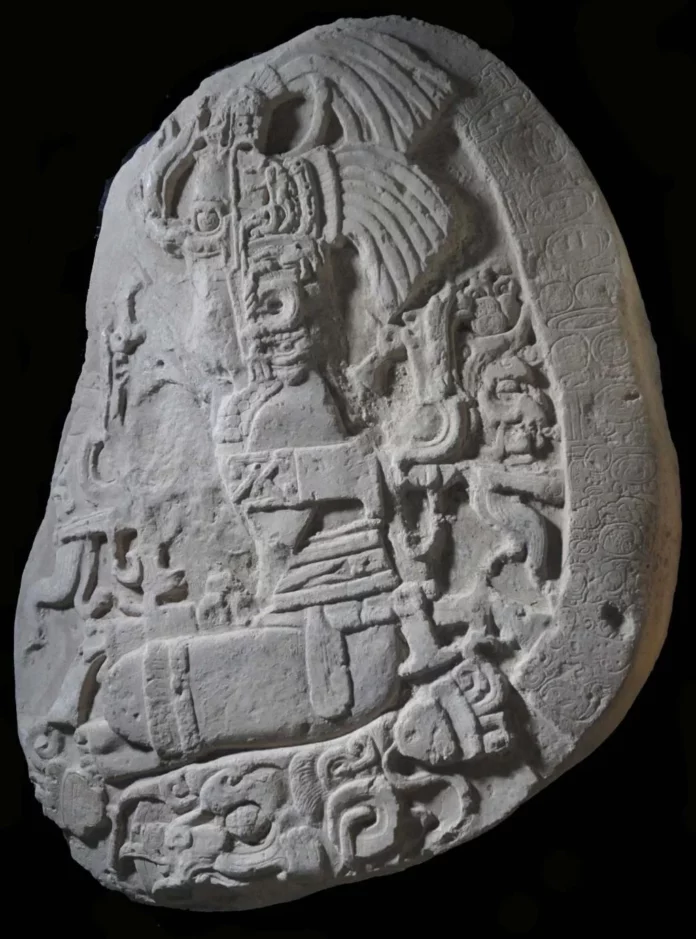In a discovery reminiscent of the political intrigue seen in the popular TV series “Game of Thrones,” a 1,500-year-old Mayan altar has been unearthed at the La Corona archaeological site in northern Guatemala. This limestone altar, found in a temple, sheds light on the sophisticated and strategic political maneuvers of the Kaanul dynasty, often referred to as the Serpent Kingdom. The altar provides a glimpse into the power struggles and alliances that shaped the ancient Mayan civilization, much like the fictional battles for control depicted in the beloved series.
Discovery of the Altar

The ancient limestone altar, weighing approximately one ton, was discovered in the dense jungles near the borders of Mexico and Belize. Tomas Barrientos, co-director of excavations and investigations at La Corona, reported that the altar features an image of King Chak Took Ich’aak, the ruler of La Corona, seated and holding a scepter from which two patron gods of the city emerge. This detailed carving, measuring 1.46 meters by 1.2 meters, also contains hieroglyphic inscriptions dating back to May 12, 544.
Historical Significance

The inscription and imagery on the altar not only highlight the reign of King Chak Took Ich’aak but also reveal that he governed the nearby city of El Peru-Waka around two decades later. This piece of history indicates the extensive reach and influence of the Kaanul dynasty. Researchers have determined that the Serpent Kingdom employed a political strategy centered around forming alliances with smaller cities surrounding their primary rival, Tikal, eventually leading to Tikal’s defeat in 562. This victory allowed the Serpent Kingdom to dominate the Mayan lowlands in southeast Mesoamerica for the next two centuries.
Mayan ‘Game of Thrones’

Barrientos likens the political strategies of the Kaanul dynasty to those depicted in “Game of Thrones,” where noble families vie for control over multiple kingdoms. The discovery of the altar, along with other findings, reveals intricate details of a marriage alliance between a princess from the Serpent Kingdom and a king of La Corona. These alliances were crucial in the dynasty’s efforts to consolidate power and expand their influence.
The Serpent Kingdom’s Expansion and Decline
![Ancient Game of Thrones? Newly discovered Mayan altar reveals political strategy [VIDEO]](https://mysterious.vncash24h.com/wp-content/uploads/2024/07/1500-year-old-mayan-altar.png)
Originating from their capital Dzibanche, the Serpent Kingdom expanded its territory to encompass present-day northern Guatemala, Belize, and the Mexican state of Campeche. However, despite their initial success and dominance, the Serpent Kingdom eventually fell to Tikal, highlighting the cyclical nature of power and politics in ancient civilizations.
Challenges of Excavation
Excavating and studying the La Corona site within the remote Mayan Biosphere Reserve presents numerous challenges. The area is plagued by threats from looting, invasions by criminal gangs, drug traffickers, and illegal ranchers. These activities pose significant risks to both the preservation of ancient artifacts and the safety of archaeologists working in the region. Efforts by authorities to counter these threats are ongoing, as the area is rich in archaeological remains.
Conclusion
The discovery of the 1,500-year-old Mayan altar at La Corona offers invaluable insights into the political machinations of the ancient Mayan civilization. The Kaanul dynasty’s strategic alliances and power struggles, reminiscent of the fictional battles in “Game of Thrones,” underscore the complexity and sophistication of their political landscape. This altar not only fills in historical gaps but also enhances our understanding of Mayan culture and its legacy of political intrigue and territorial conquest. As excavations continue, we can hope to uncover more fascinating details about this ancient civilization and the stories that shaped its history.
